Visual Artist based in Tampa, FL
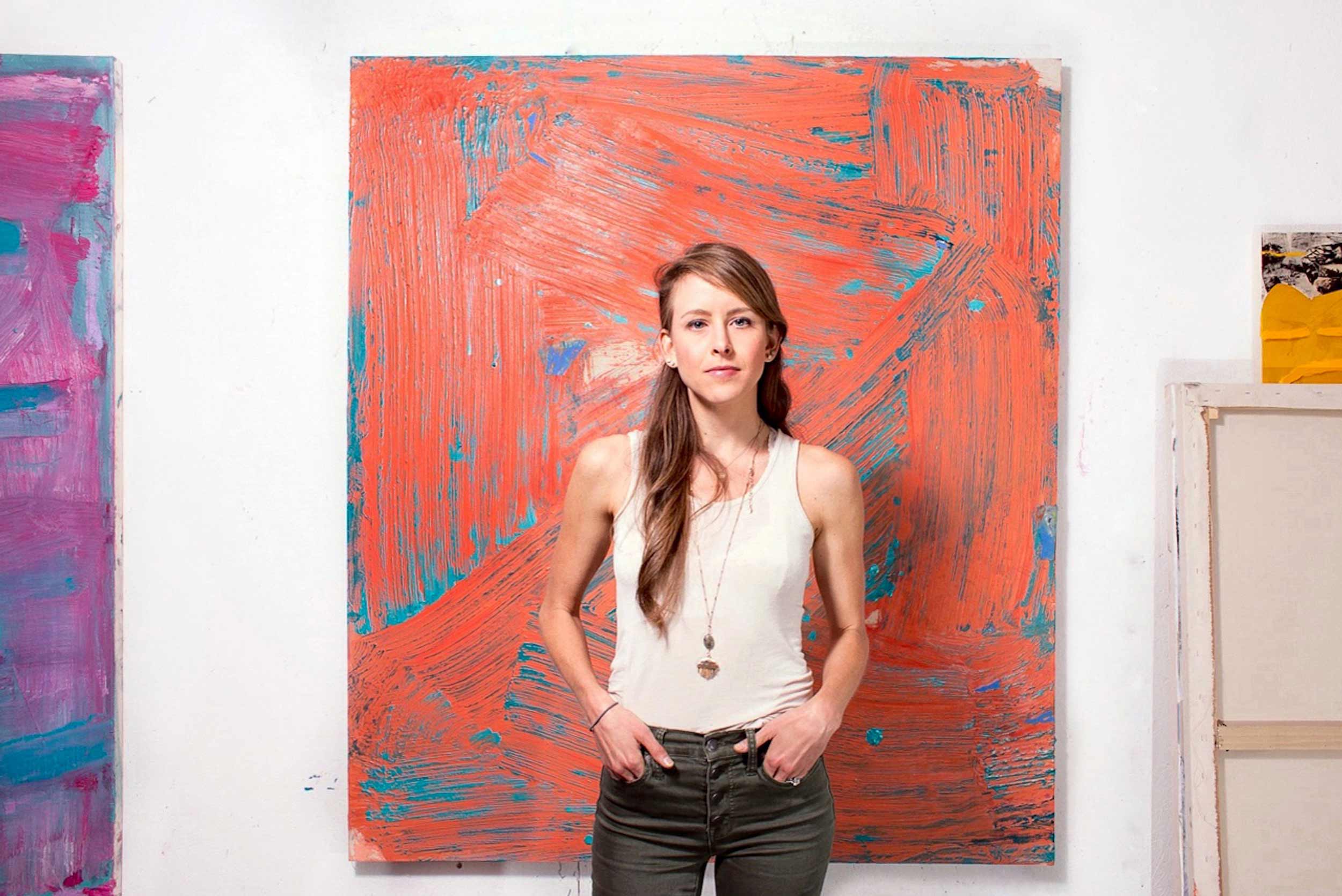
Taylor O. Thomas in her studio, 2019, Tampa, FL. Photography by Christian Cortes
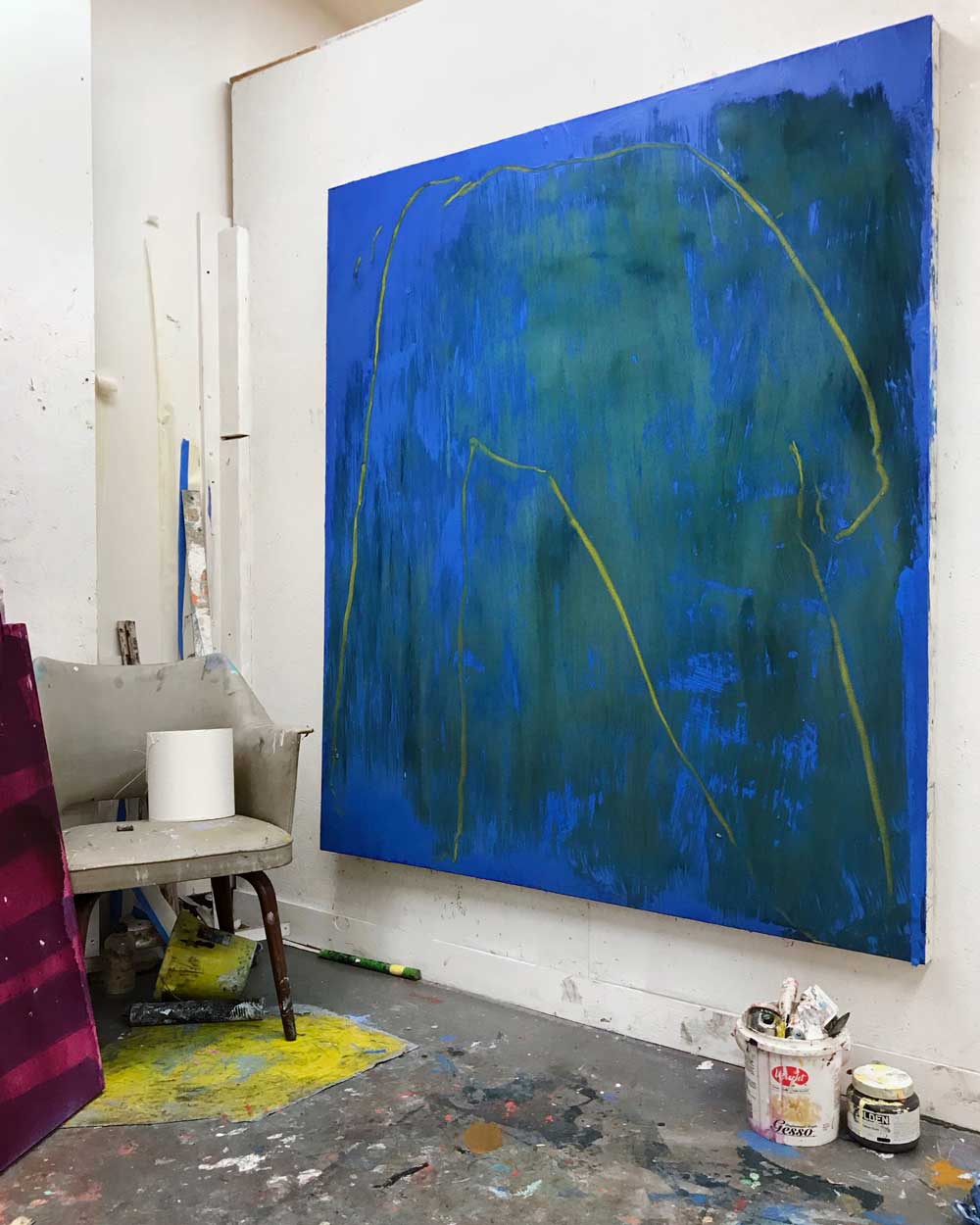
Studio view of current work in progress, 2019, Tampa, FL
When did you know you wanted to be an artist?
Deep down, I think I always knew I wanted to be an artist– perhaps not a painter, but a creator in some shape or form. I grew up in Nashville, TN and focused much of my upbringing around my "three s's": singing, soccer, and school. I've always balanced the perfectionist in me with creative outlets that completely demolish my comfort zones. It wasn't until my undergraduate education at Davidson College that visual art took over as my main passion, though. In a split decision to abandon (what I thought was) my calling to be dental surgeon, I dropped every one of my sophomore year math and science courses and picked up drawing and painting classes instead. I'd developed visual works prior to that moment, but it was then that art began to spark a deep need and want in me, and I've not stopped creating since.

Dogged Days, 2019, acrylic, oil, and pastel on canvas, 20x16 inches
What are you currently working on and where did the inspiration for it come from?
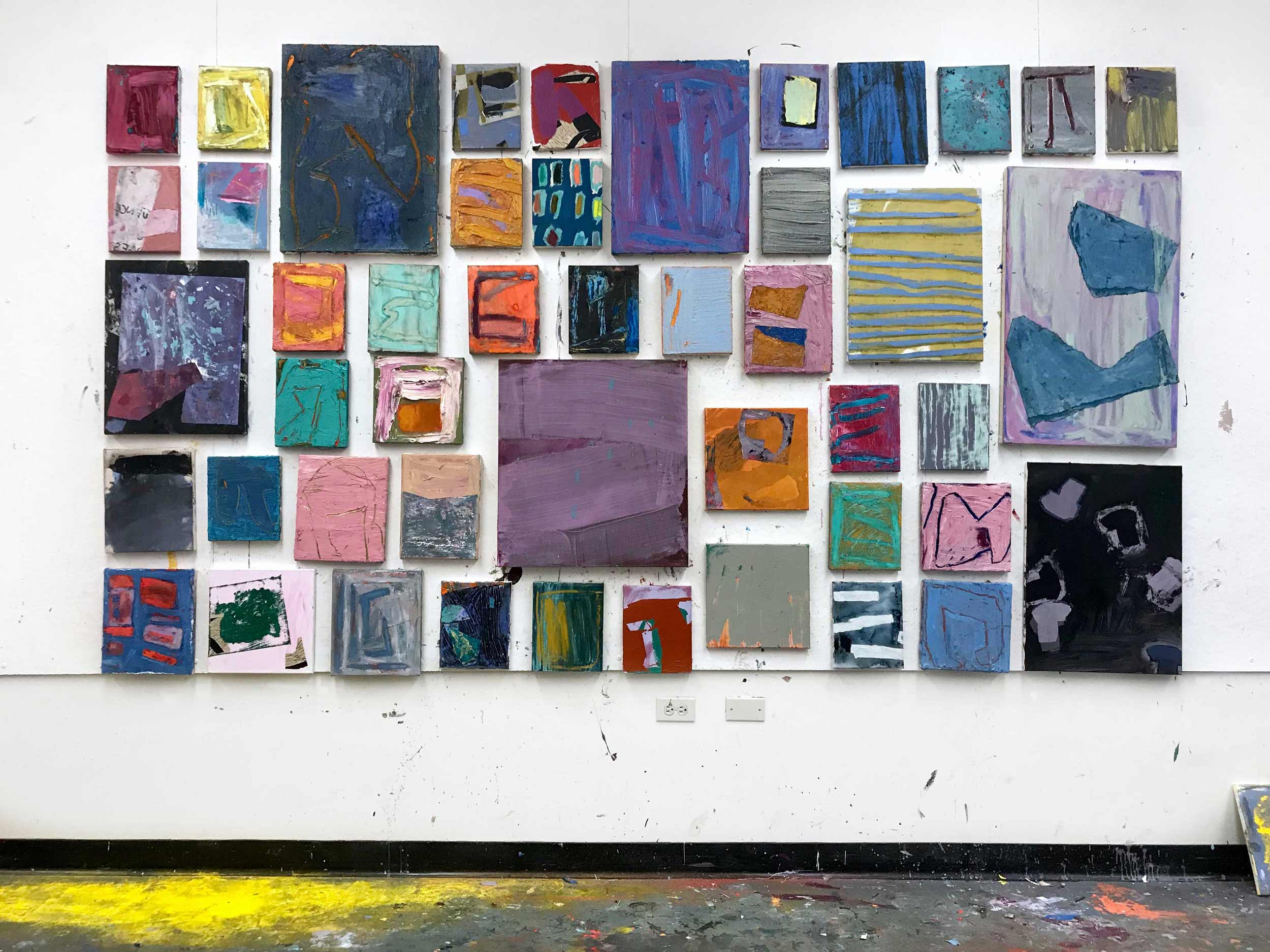
Studio view of small works (installation in progress), 2019, Tampa, FL
If someone were to walk into my studio, they would see a plethora of tiny paintings (8 to 10 inches each) alongside works that are closer to body size. I have been questioning the relationships that scale can create among works: How might a massive canvas relate to one of a similar palette but minuscule size? What kind of experience does each surface offer when it comes to intimacy and tactility? And finally, how does shifting sizes diversify and complicate my process of mark making?

Studio view of layered paintings and visual inspiration for future works, 2019, Tampa, FL
This body of work has been majorly dictated by my desire to unify self-expression with ongoing discovery. I am constantly searching for clarity when it comes to which kinds of forms, colors, and movements I identify with (in my studio and in my broader surroundings). At the same time, though, these paintings also hinge on my insistence to experiment and, simply put, to remain intrigued with paint and the myriad of things I can make it do. These gestural paintings are like unearthed sites for me, both familiar and surprising to have found.
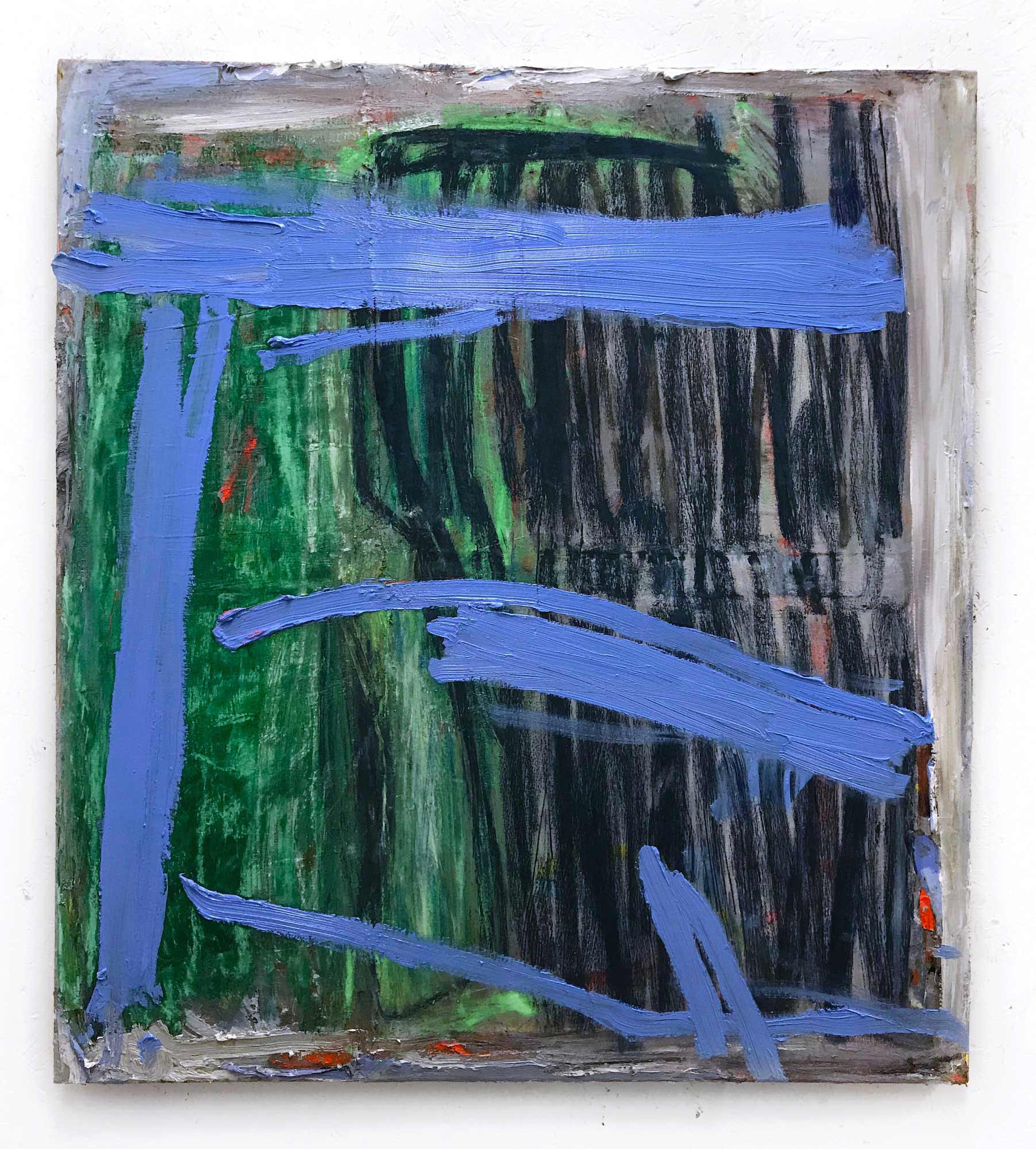
Easy Enough, 2019, acrylic, oil, oil stick, and pastel on canvas, 42x38 inches
Innovation does not only happen in the field of technology — it occurs everyday in an artist's practice. What do you do for inspiration?
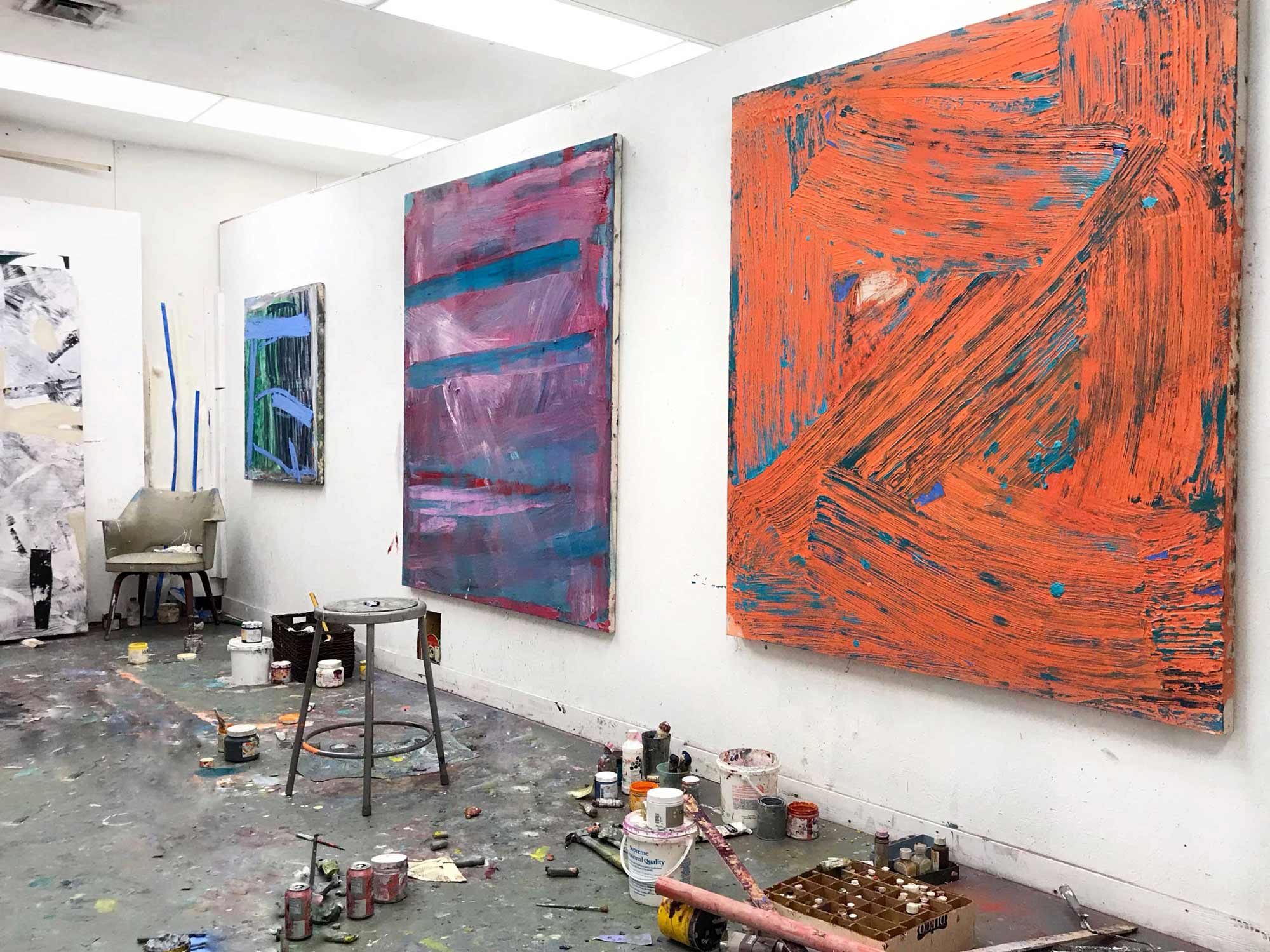 Studio view of large scale works, 2019, Tampa, FL
Studio view of large scale works, 2019, Tampa, FL
Inspiration, for me, typically comes in three ways. First, I feel most eager to paint after I've opened my eyes to certain quirky aspects of the world around me. A painting may begin with a gesture I’ve borrowed from a dilapidated wall, cracking street, draping telephone wire, or slanted pole. I'm drawn to visual situations that approach "rightness" and "wrongness" at the same time. Second, I feel most able to paint once I've allowed words to slow me down a bit. Whether I tuck away a phrase from one of my husband's poems or simply a word I've scrawled in my journal, I (ideally) like to approach the studio ruminating on something deeper, bigger than my day-to-day commitments. Third, I feel most energized to paint when I'm already painting. Seeing how things change and unfold in the studio is often the most inspiring part of my practice– the experiments that happen there beat anything I could formulate in my head beforehand.
Where do ideas start for you? In the studio or being in the world?
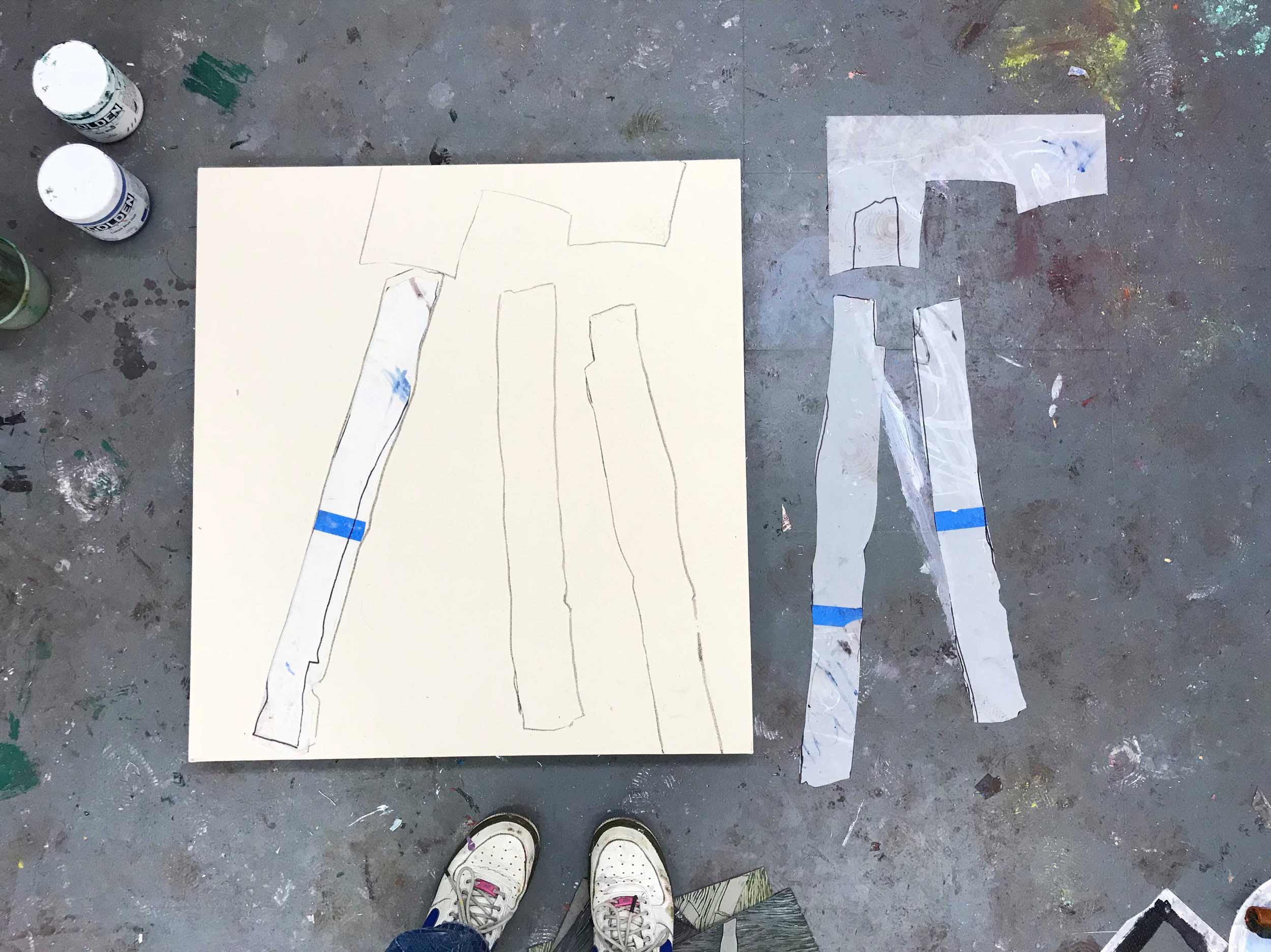
Found shapes provide the structure for a work in progress, 2018, Tampa, FL
My practice and ideas definitely involve time in my studio as well as time existing in the world, as mentioned in my last answer. A shape may grab my attention as I am walking from point A to point B in the morning, but the way it develops from there is hardly tied to an idea of replicating what I've seen. I take from my environment the situations that speak to me, my demeanor, my sense of gesture, and then I allow my intuitive movements to take over in the studio. Material manipulation is a great impetus behind much of my decision-making; I am infatuated with how paint can be spread, glopped, scratched, and rubbed over a surface. Sometimes, the initial point of inspiration doesn't reveal itself in the final image–it gets surrendered throughout my process. But arriving at a work that I consider successful is nonetheless still dependent upon that starting point, whether it can be seen by others or simply rests in my own memory.
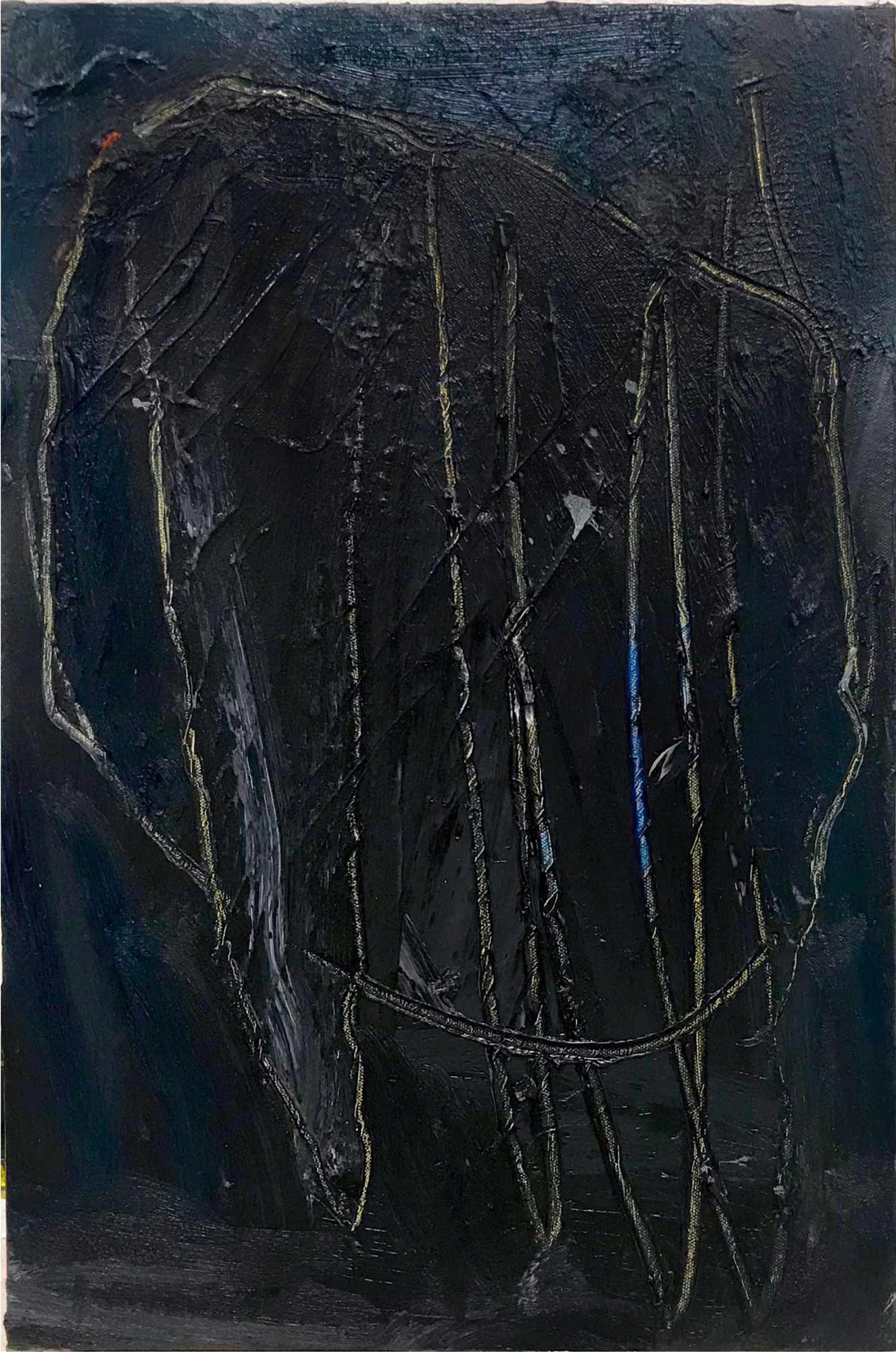
Friends with Sticks, 2019, acrylic, oil, and pastel on canvas, 20x14 inches
How do you make your work? Where do you start and how does the process evolve?
I rarely do preliminary sketches for my paintings, but will often revisit and reference photographs of objects or arrangements from my environment that may serve as formal launching points for new works. My style has always been heavily based on mark making and the use of gestural painting as a form of expression and physicality. That said, I have gone through some significant changes in my work over the past three years of graduate school, and while I believe there will always be a sense of "my hand" in the work, I am also learning that being locked into an anticipated style can be limiting. Arriving at my visual language is a constant back-and-forth between establishing a consistent voice as an artist while also growing and pushing beyond my own formulas and tendencies.

Everybody Glows in the Dark, 2019, acrylic, oil and pigment on canvas, 10x8 inches
Many artists live by their creative routines, do you have your own studio ritual? What does that look like for you?
My studio is a personal haven, a physical site, and a work place all in one. I'm sort of the opposite of the stereotypical, up all night, starving artist character– I paint best during the day, because my mind and body become pretty worthless once dinnertime hits. The only major ritual I have when it comes to making is my insistence to sing while I paint. I have had the same "Painting Playlist" for 4 years, so it's safe to say that known melodies rarely grow old on me.
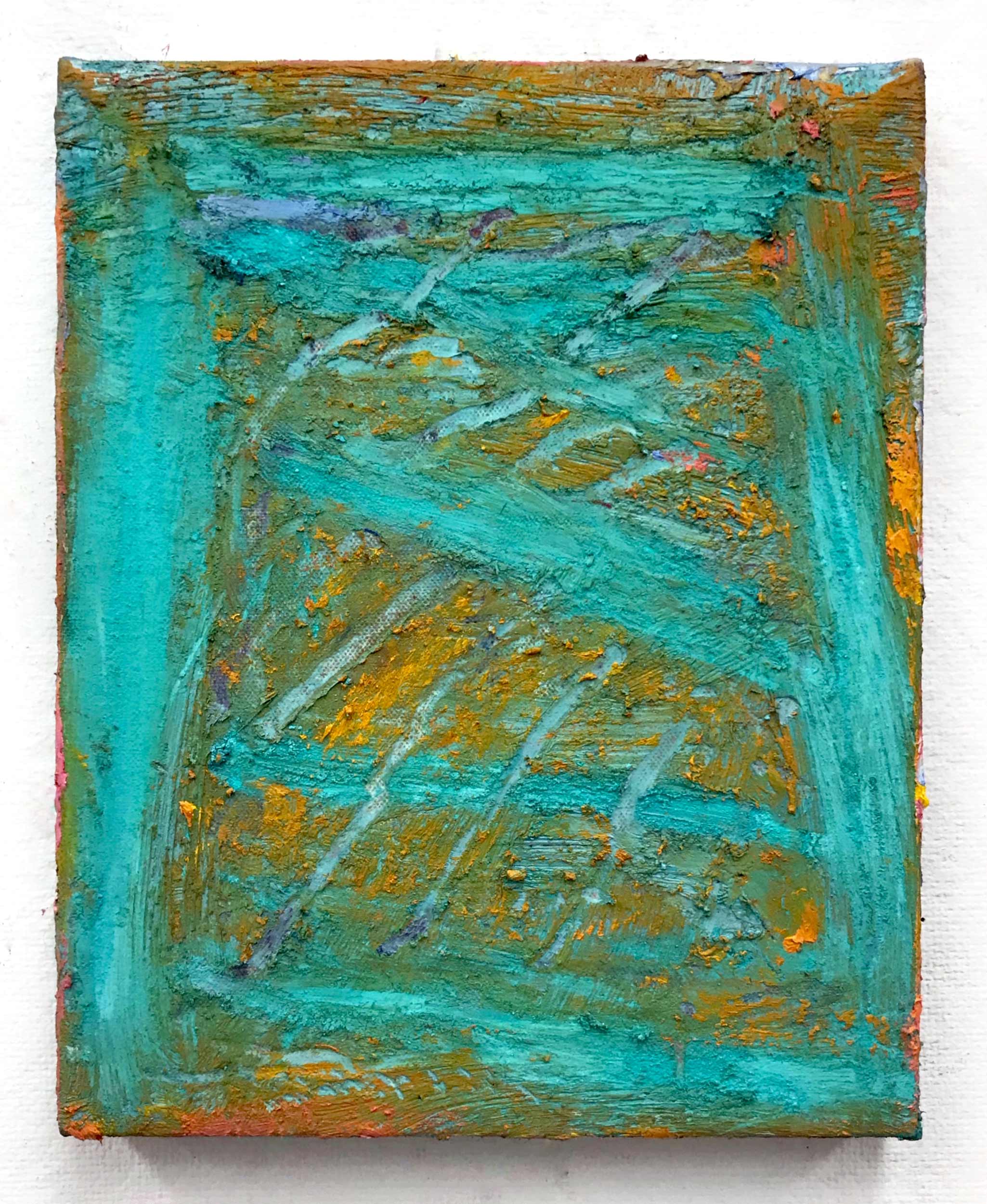
I Reckon, 2019, oil and pastel on canvas, 10x8 inches
Who are your biggest influences?
My biggest influences range from artists to mentors to those closest to me whose relationships have become intertwined with my own being. Cy Twombly was probably the first artist I felt connected to, Joan Mitchell soon following, and now too many have accumulated to name.
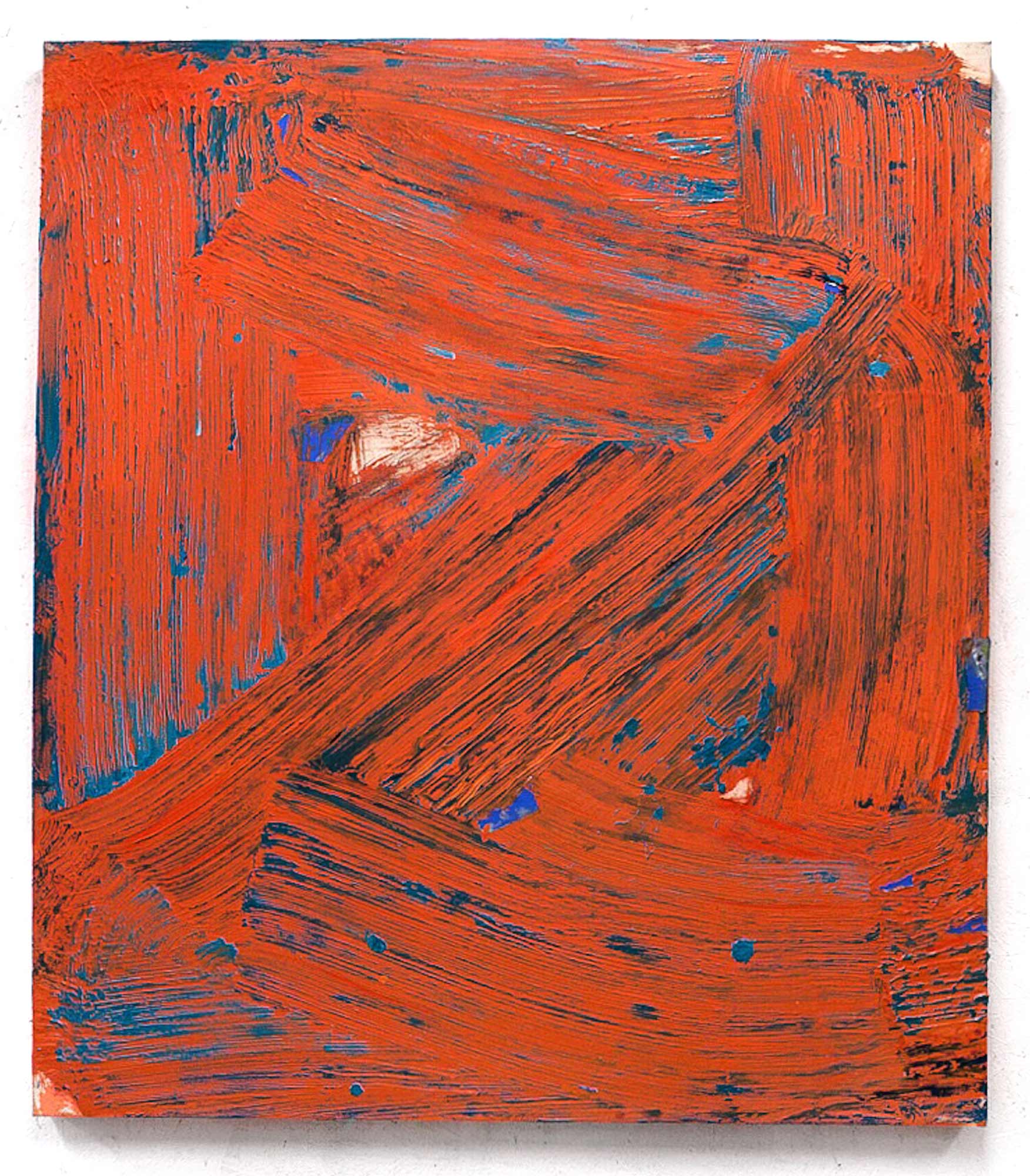
On This Stone, I Do I Do, 2019, acrylic, pastel, and collage on canvas, 68x60 inches
My high school English teacher, Varina Willse, was one of the first women who wowed me with her creativity and pushed me to embrace my mind and voice. She taught me to hang on the words of poets as if there were treasures within them, if only I dive deep enough. That sense of pondering and searching still translates through my painting practice now. There are countless professors and friends who have generously given their time and energies to me and my work. I think one of the biggest influences on my practice today, though, is my husband. He is an artist himself, a poet, and offers a perspective that's both outside of the visual art world and yet every bit as valid and impactful. I also can't tell you how many times he has saved me from my awful choices of painting titles.
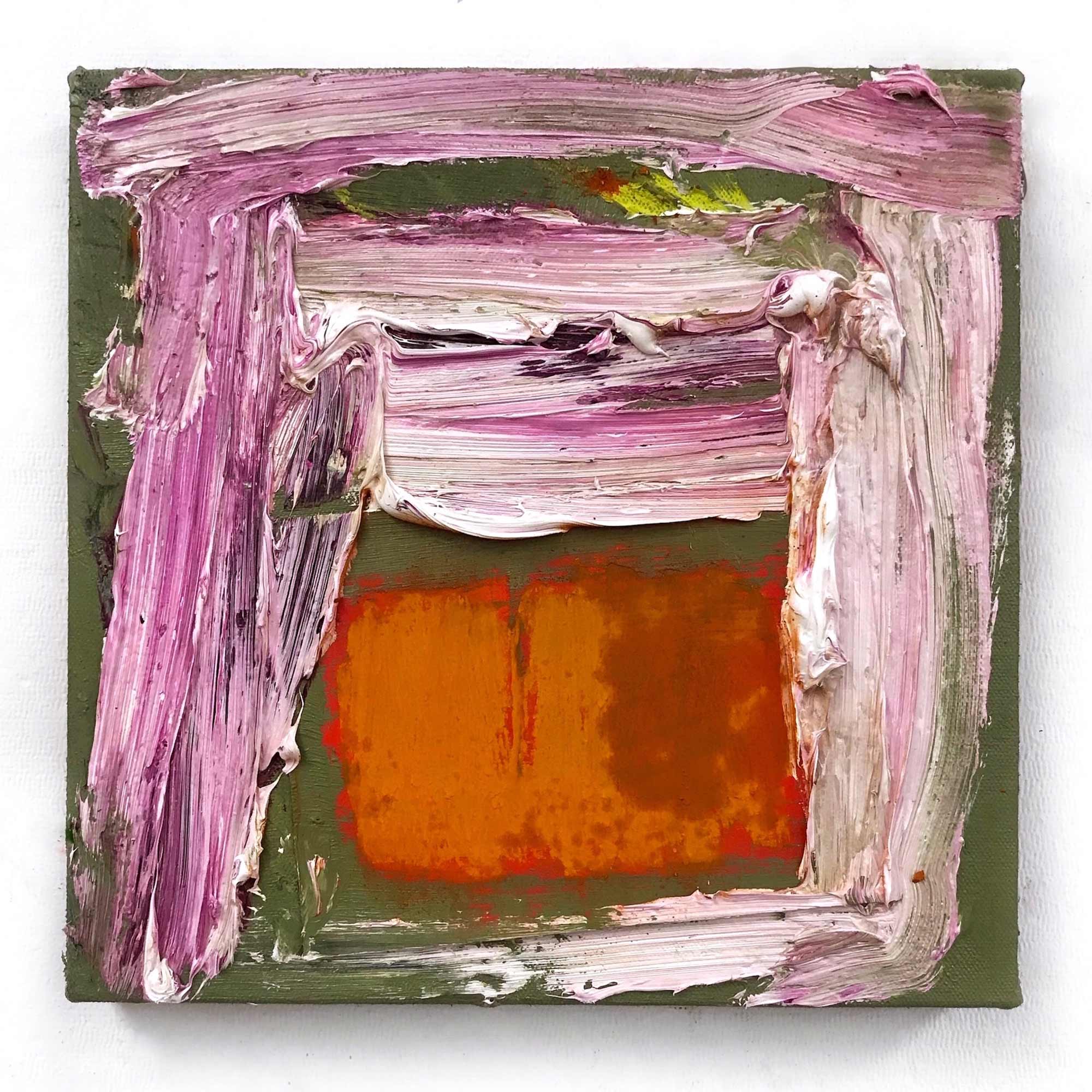
Chowning Square, 2019, Acrylic, oil, pastel, and collage on canvas, 10x10 inches
How will Innovate Grant contribute to your practice?
I have immense gratitude for the Innovate Grant and the way it will allow me to continue expanding on my current and future series of paintings. As my material explorations grow, so do the needs for more mediums, more cans of oil paint, and more tools with which to layer and manipulate my surfaces. This funding will help provide for those needs and will be integral to pushing my practice forward. I give those behind the Innovate Grant my sincerest thanks for this opportunity!

Our Time as Told by Inches, 2019, acrylic, oil, oil stick, pastel, and collage on canvas, 72x60 inches
What’s the best piece of advice you’ve been given?
Show up. Inspired, unmotivated, giddy, lost, however you may be, showing up is the only way to take the next step (be it within the studio, or in life in general).
What is the best advice you would give to other artists?
Show up! Push yourself toward the challenges that will grow you, and give yourself grace throughout that process.
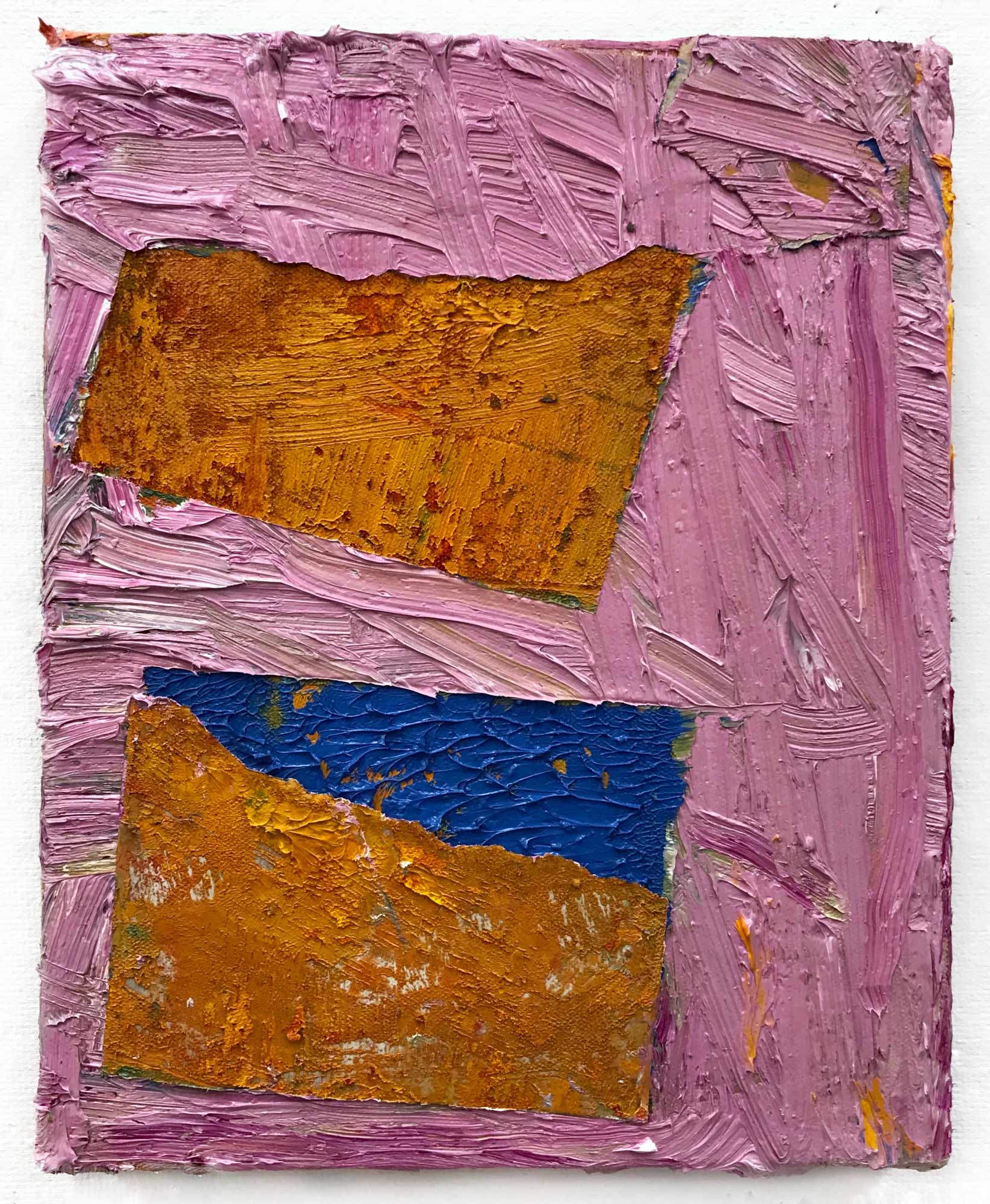
Where Sun Slipped Through, 2019, oil on canvas, 12x10 inches
Stay up to date with Taylor O. Thomas
Instagram @taylorothomas
www.taylorothomas.com